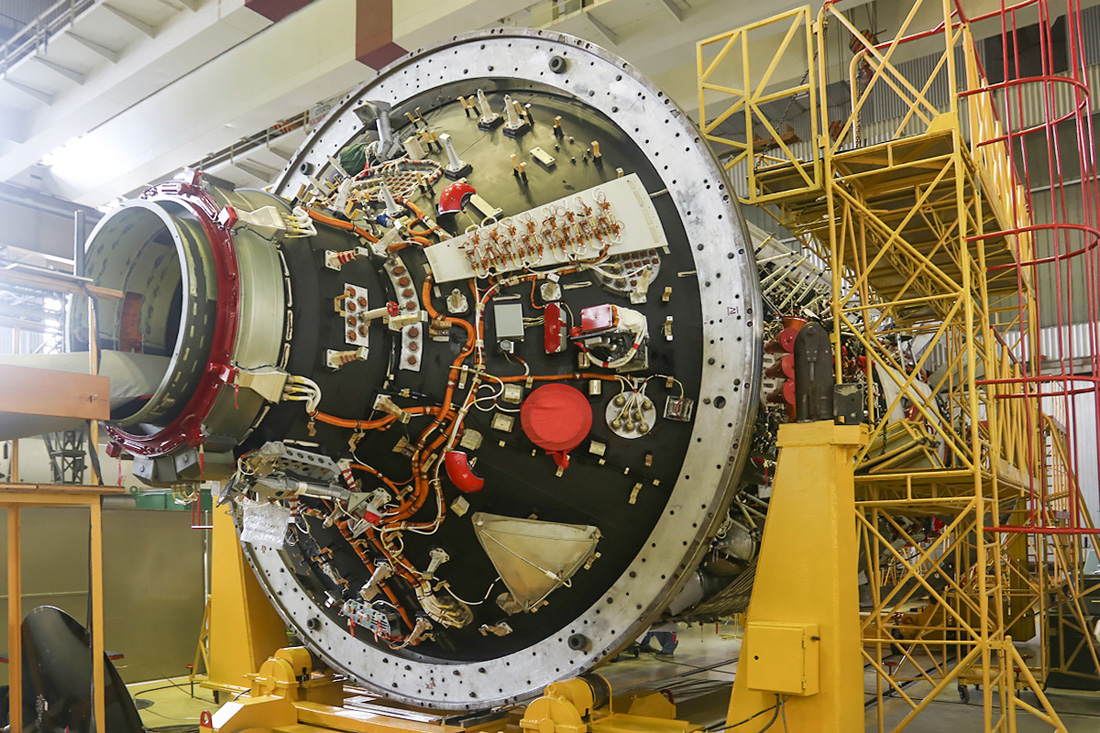
Several years ago, we analyzed the progress of Russian science on the International Space Station. A simple count of scientific publications published in English showed that even the Japanese have a higher return on manned astronautics, although Japanese astronauts visit the ISS much less often than Russian ones. This is partly due to the high employment of our crews in servicing the station, partly to bureaucratic difficulties in designing experiments at the station, and partly to the unwillingness of our scientists to publish the results in the international language of science. But the limited internal space of the Russian modules is also important. It simply cannot accommodate all the scientific equipment that scientists would like. And now the day is getting closer when at least this problem can be solved.

The multipurpose laboratory module has come a long way. The structure was developed as a Transport Supply Ship back in the 70s.
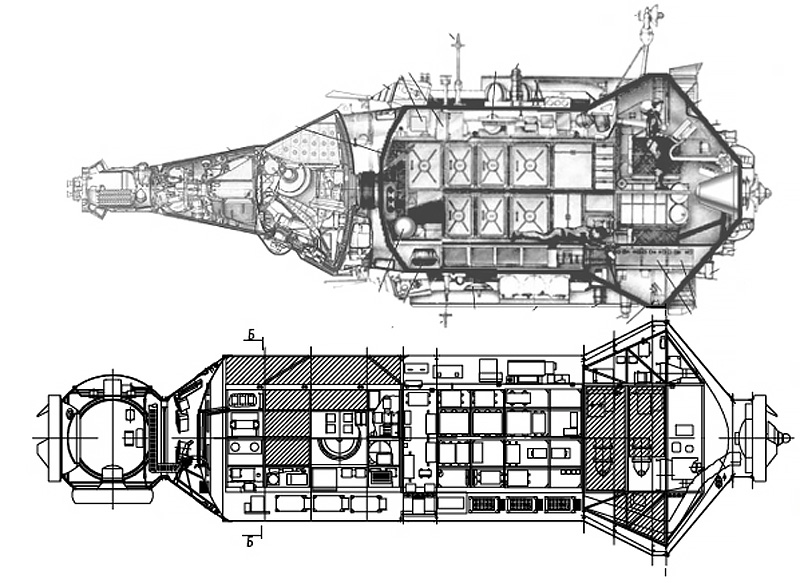
In the 90s, it was produced as an engineering model of the Zarya module at the Center. Khrunichev commissioned by Boeing and funded by NASA. In the 2000s, they began to prepare it for flight into space, as an independent module of the Russian segment of the station. "Science" was supposed to be part of the ISS back in 2007, but then plans began to "move to the right." Pose-pose-pose-the past head of Roscosmos Anatoly Perminov promised the launch of MLM by 2011, but the manufacturing plant was able to finish the module only in 2012.

One of the important reasons why "Science" is still on Earth is metal shavings discovered in 2013 in the fuel system. This system is necessary for the module to reach the International Space Station, and for further work on it. After all, historically, the module develops from a spacecraft, which should be able to fly independently. This is an advantage and a weakness of MLM in comparison with the American ISS modules, most of which were delivered by Shuttles. In general, independence is good, but it became a weakness when I had to leave the module on Earth and start cleaning the tanks and the fuel system.

Tanks "Science" is a forgotten technology of a disappeared civilization, which now the domestic industry can no longer repeat. Complexitythe fact that they are reusable, and for effective work in zero gravity, a complex bellows system is located inside the tank. Simply put - an accordion, which squeezes out the fuel into the pipes to the engines. Thanks to the accordion, the tanks can be refilled and used many times. And, of course, no blockages are allowed there.
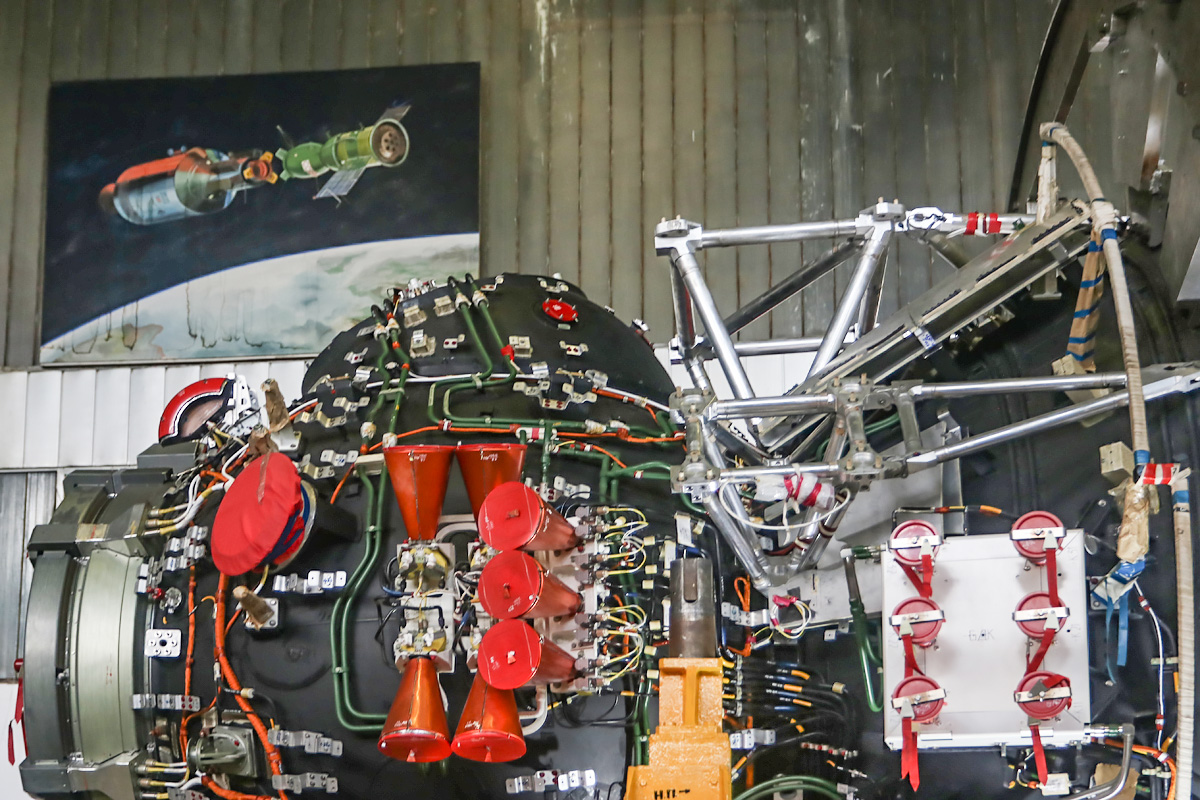
The tanks were cleaned as best they could, but they did not completely get rid of the shavings. It is even possible that it arises during the operation of the "accordion", and the previous ships and modules had the same problems that did not affect their performance in any way. In short, the tests showed that it should work and so, therefore, by a strong-willed decision, "Science" was assigned to flight, with hope for the miracle of the Soviet design genius, perhaps even husim. The pipelines, however, were replaced with new ones.

The last exam before graduation, the module took place in a vacuum chamber. Due to a long stay in terrestrial conditions, rubber seals could warp and lose their tightness. The seals they could have changed, and this summer the module was vacuum-tested to make sure there were no leaks.
A few days before the post-Soviet "dinosaur" module was sent to Baikonur, journalists and bloggers were allowed to his body. To emphasize the difference from the previous "Science" of past decades, the name was added "U", now it is "Multipurpose laboratory module - improved", as a sign of the past modernization.
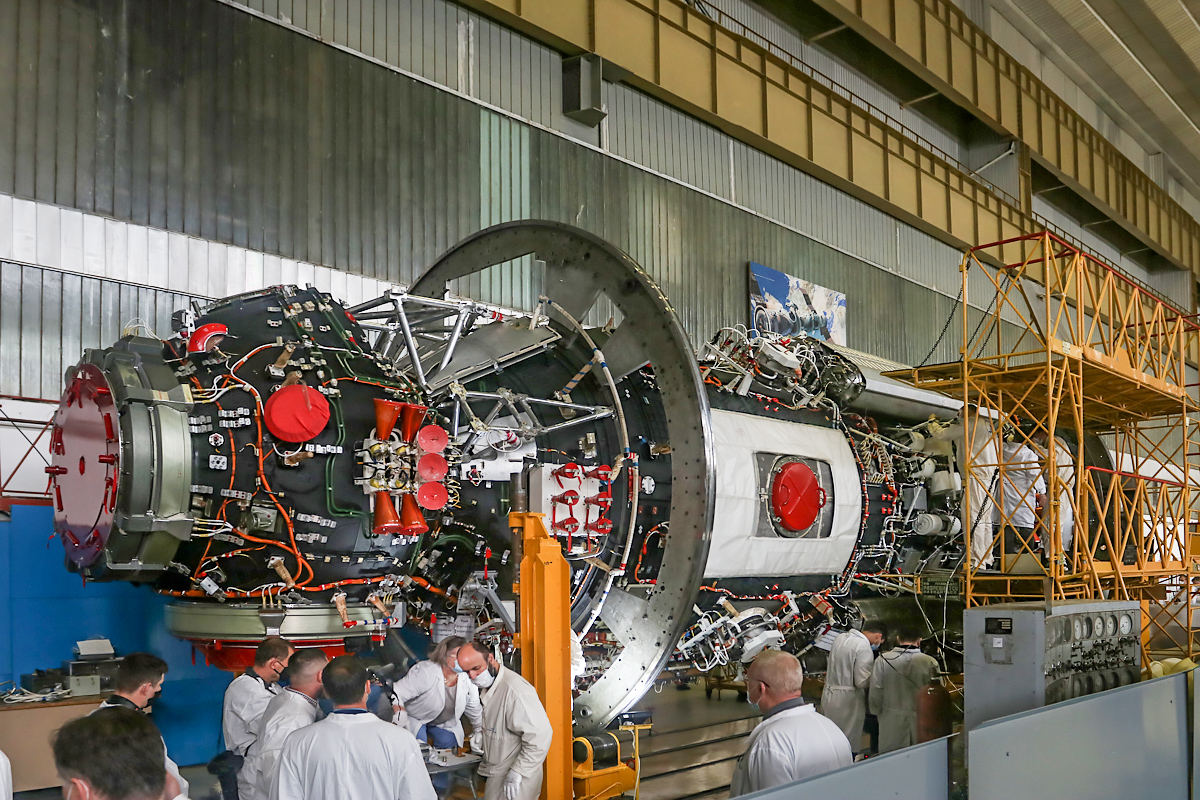
Not only everyone was allowed inside. Most had to look through the open docking port hatch. This concern is dictated primarily by the requirements of cleanliness. On the ISS, due to weightlessness, people have weakened immunity, so uninvited guests from Earth are not needed. However, the journalists of "Komsomolskaya Pravda" still managed to look inside even earlier.
For additional protection from dirt from the street, a "dressing room" was provided in front of the module entrance, where the clothes and shoes of everyone who even approached the open hatch of the space laboratory were additionally cleaned.

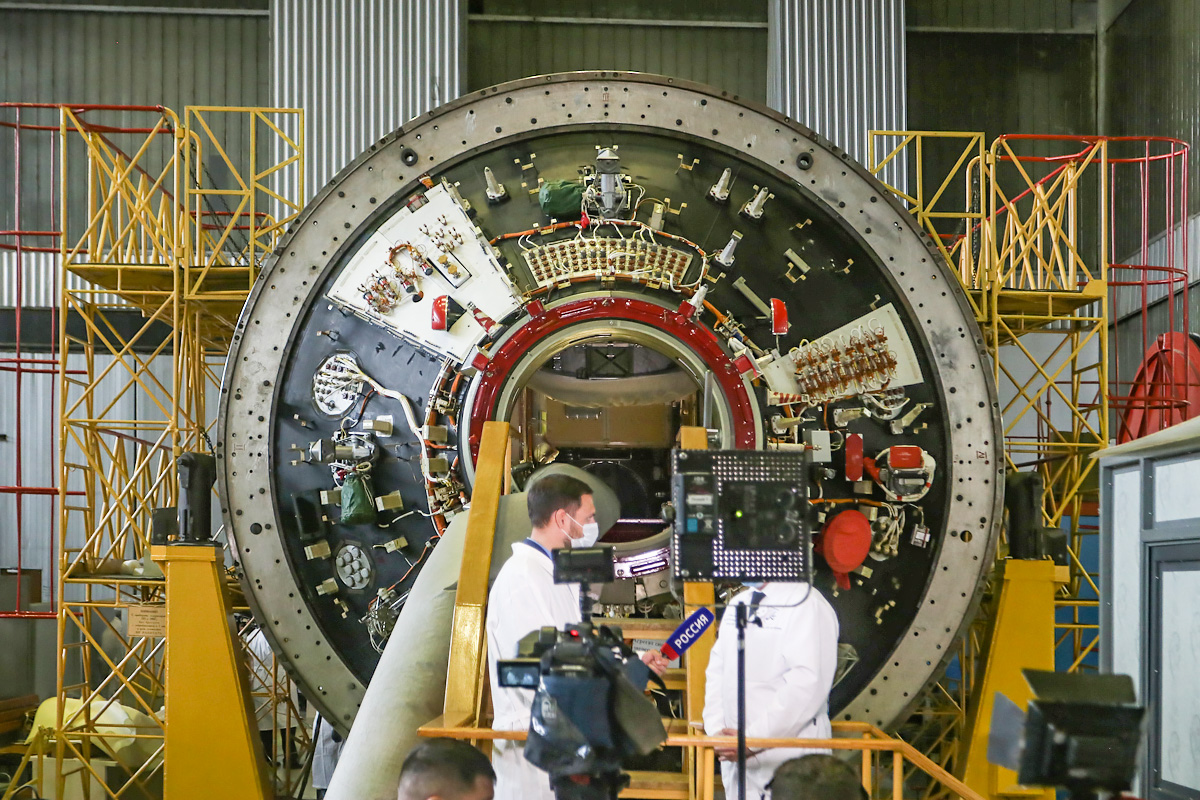
The outer sections of the station were not so carefully defended. Here you could be right next to those same long-suffering fuel tanks.
From the point of view of the safety of astronauts, this is no longer so scary, because there will be no direct contact with these elements of the module in space. This comparison with the skeleton of a dinosaur is no coincidence. On the outside, more office equipment, meteorite shields and thermal insulation will be added. The last training module will take place at Baikonur.
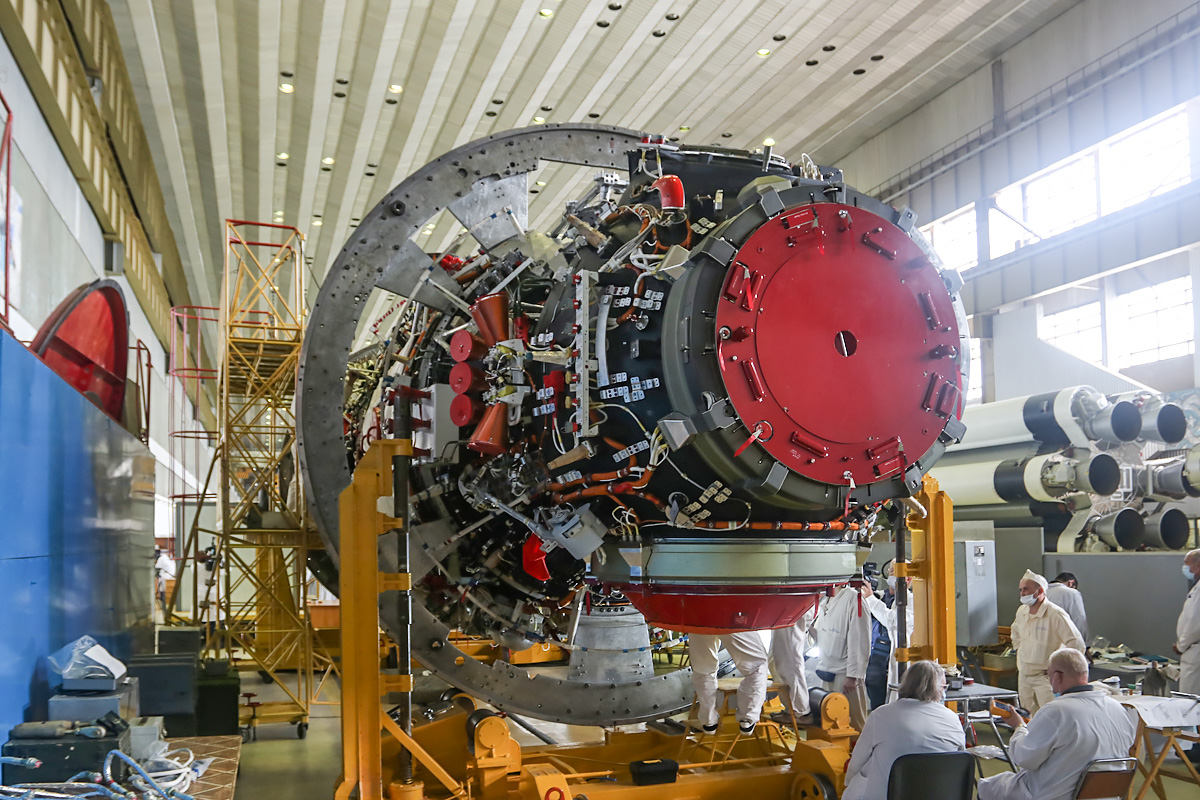
Nearby, in the corner, were the module's cruise engines, unnoticed by the journalists. Apparently, they will also be mounted at the cosmodrome.
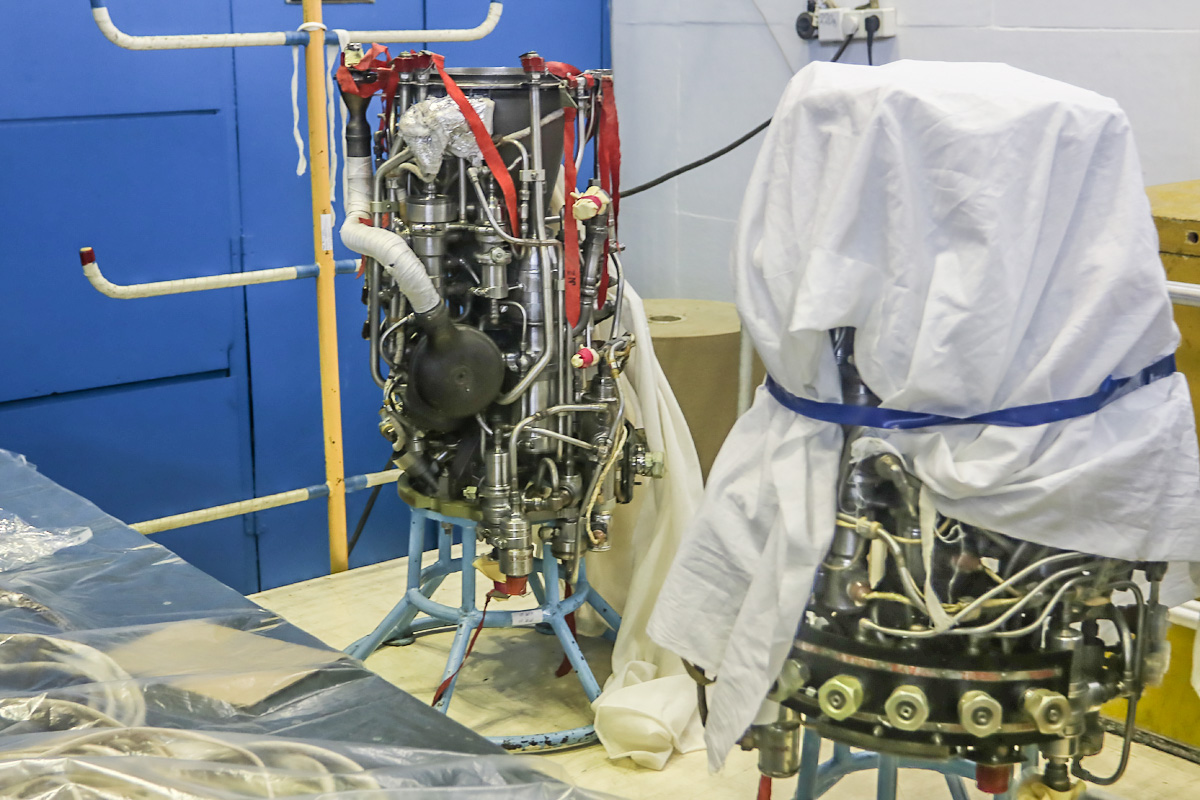
Despite the invasion of journalists, work with the module continued. This was no longer the completion of the assembly, but preparation for transportation by rail. All cables must be fixed, the holes must be closed, the pipes must be plugged. Traditionally, everything that needs to be removed before starting on the device is red: electrical tape, covers, elements with red tags.
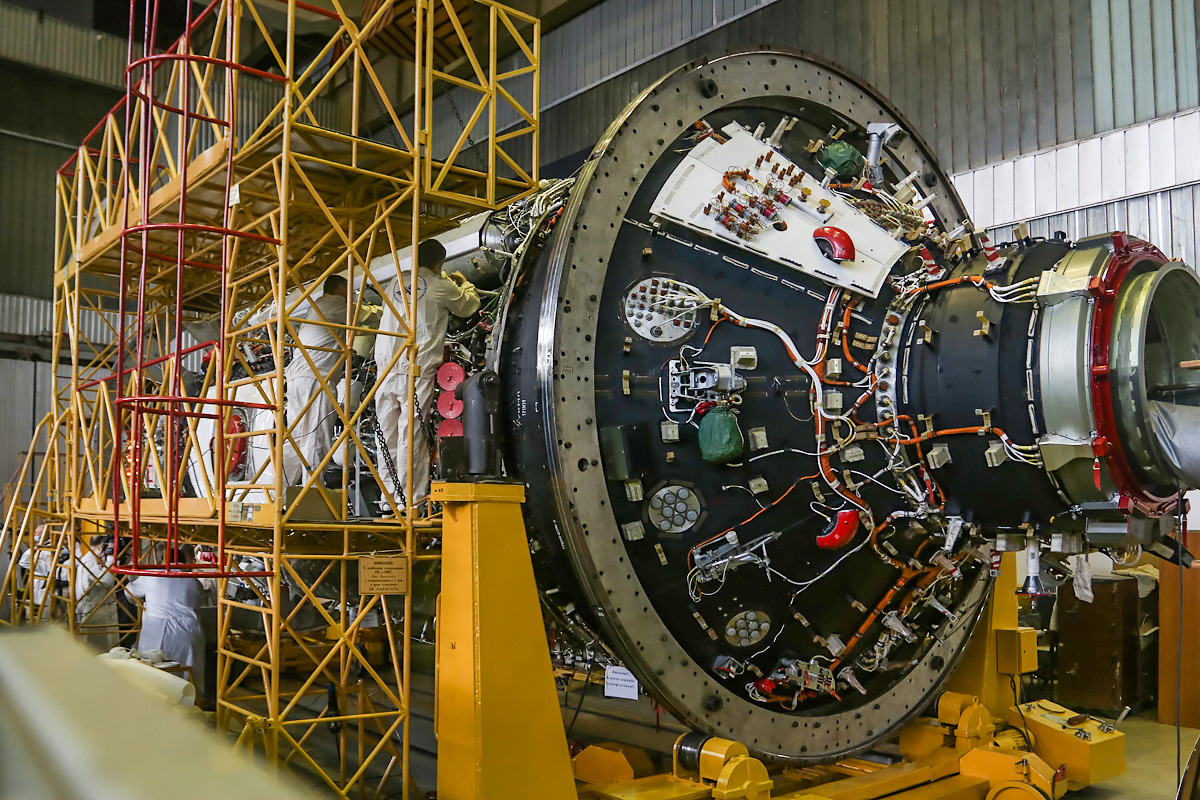
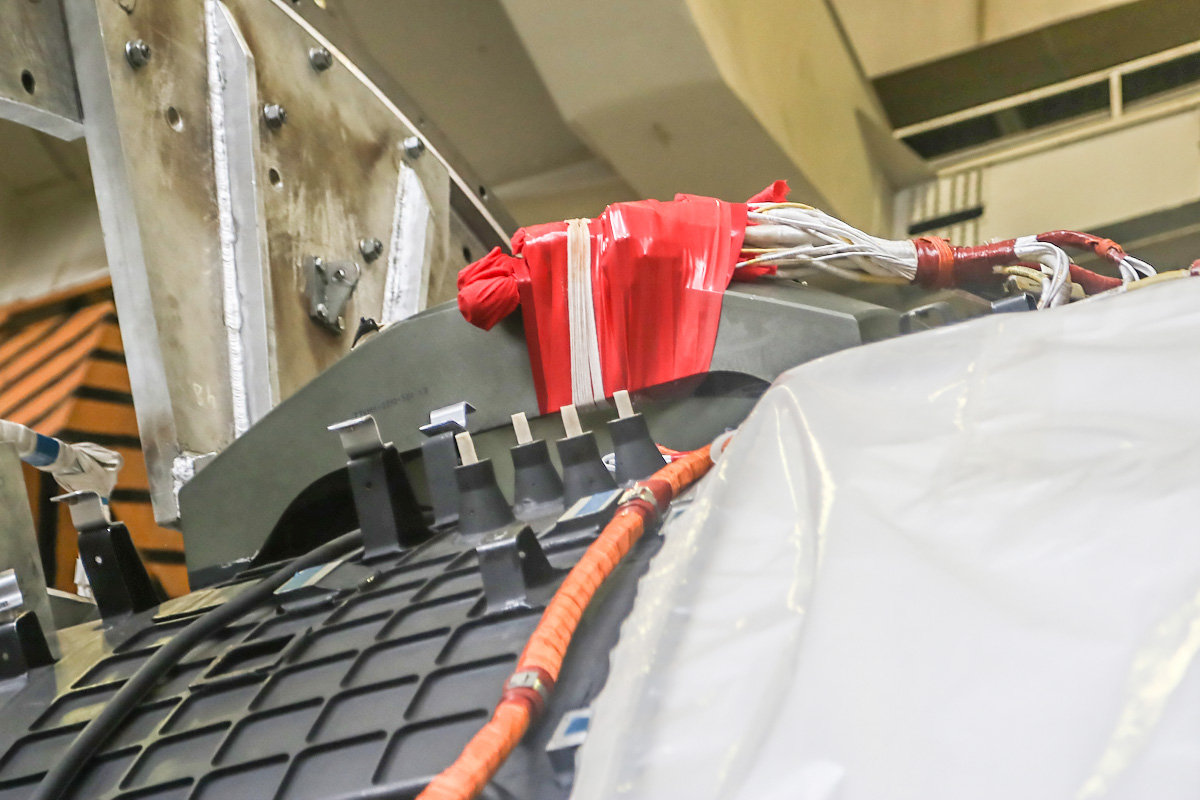
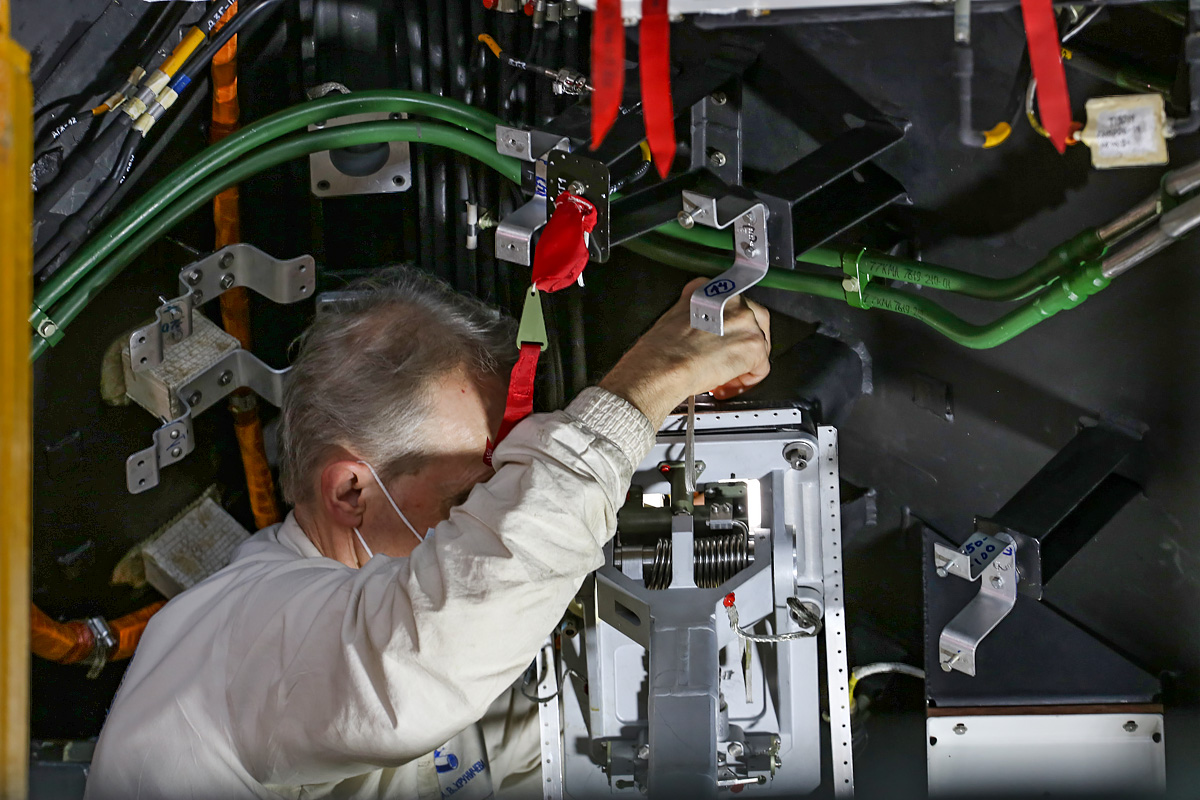
According to a representative of the enterprise, the module's long-term delay on Earth made it possible to pass a good school for a new generation of employees. The continuity of generations is also noticeable in the photo, both in terms of the age of the participants in the work and in terms of technological equipment.
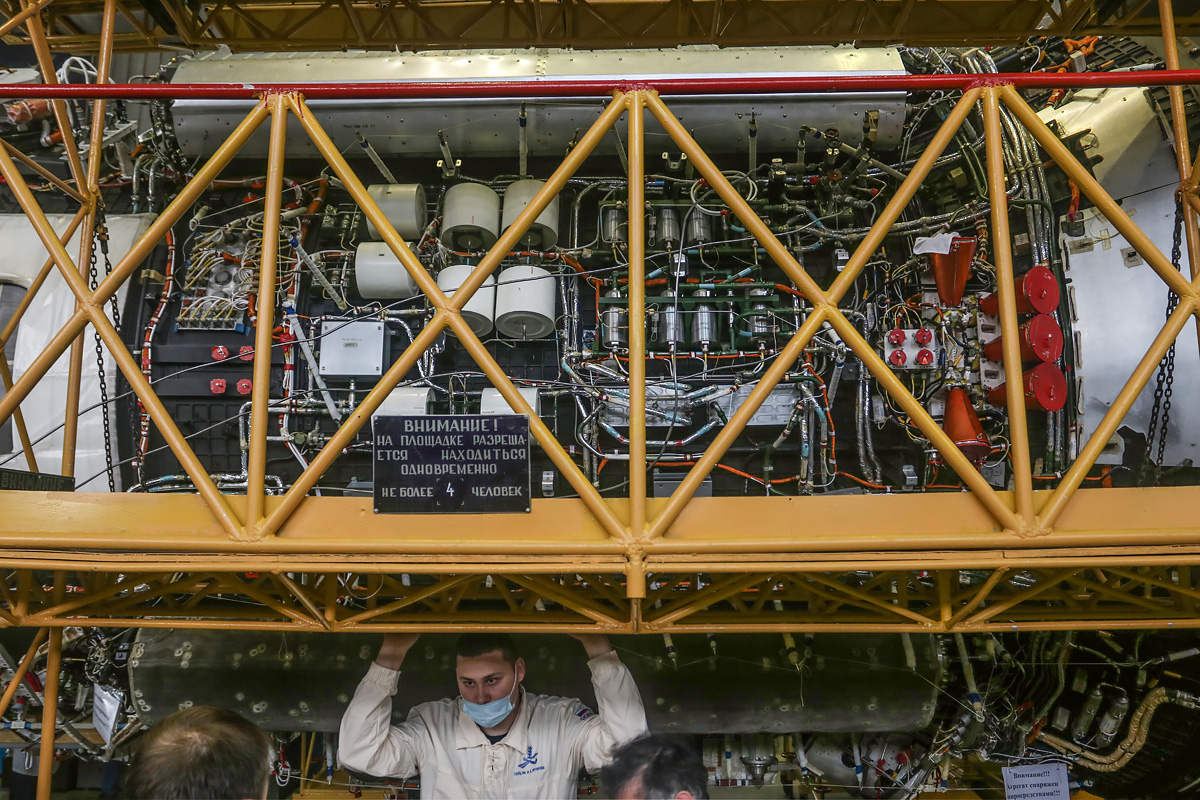
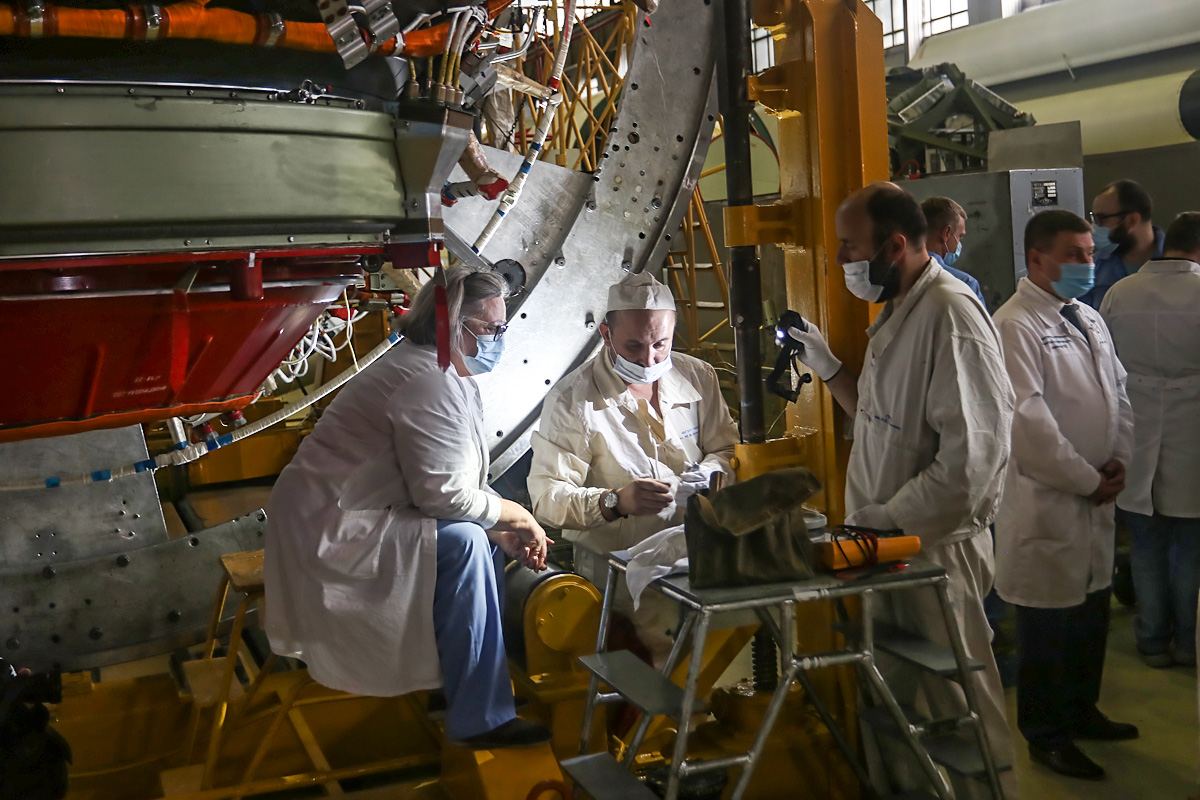

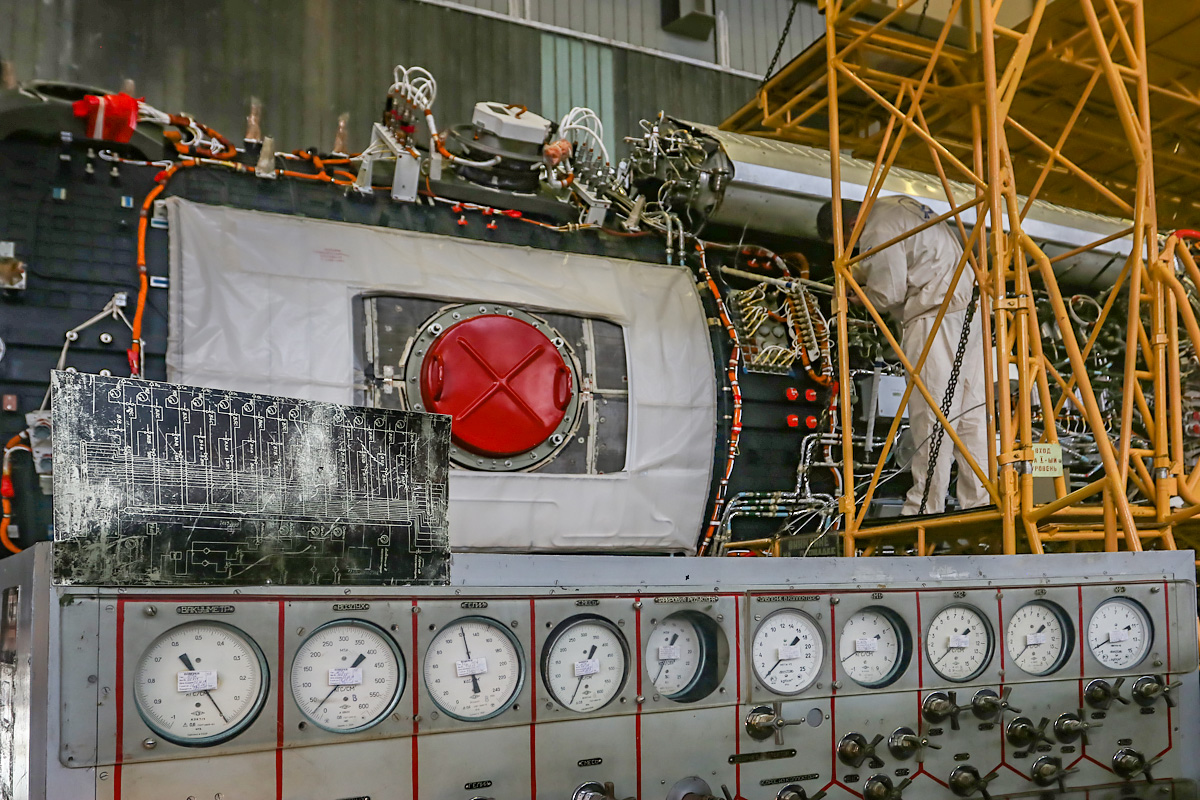
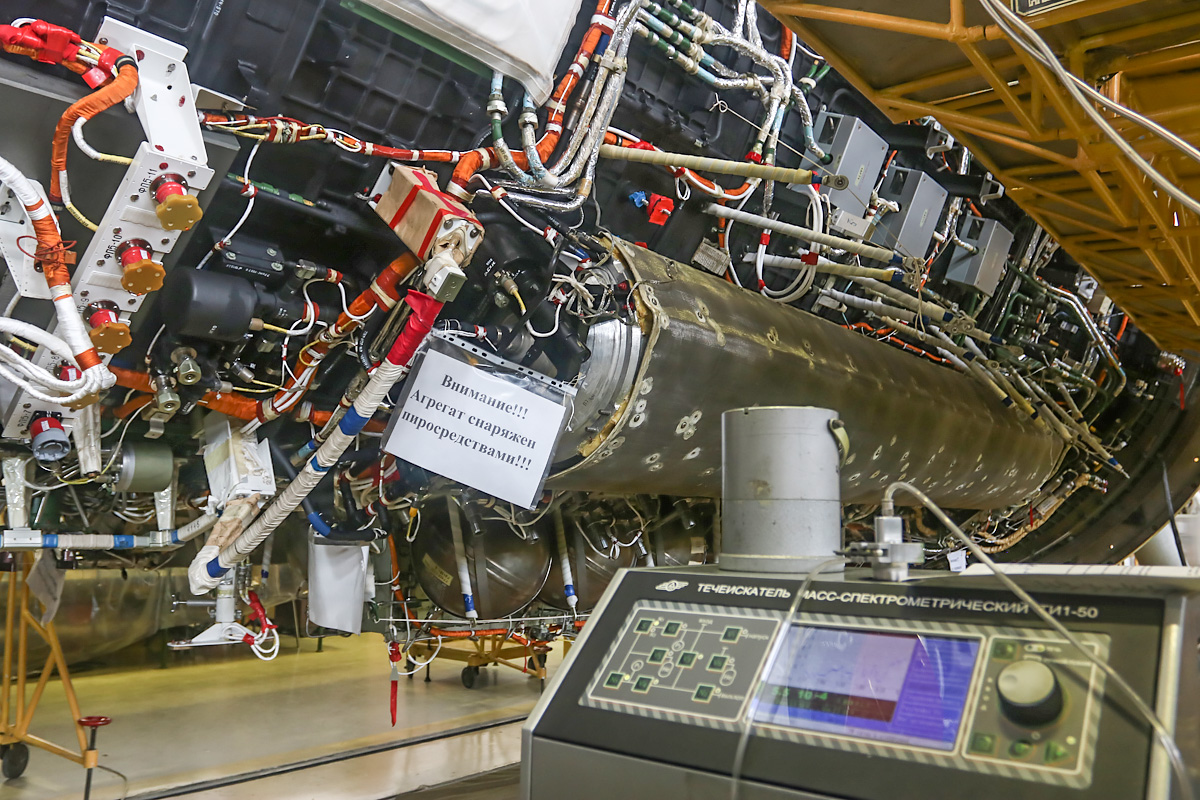
After we left the work with the module continued for several days. The final test was the flip of the module, which showed that everything was secured and ready for transportation.
The MLM was transported in a transport container similar to the rocket nose cone. In order not to confuse this container with a flight fairing, it was also painted red.
Now "Science" is already at Baikonur, is undergoing electrical tests, increasing "meat", and preparing for the start. If all goes well, the launch of MLM-U will be timed to coincide with the 60th anniversary of the first manned flight into space.

I would like to express my gratitude to the press service of Roscosmos for their help in preparing the photo report.